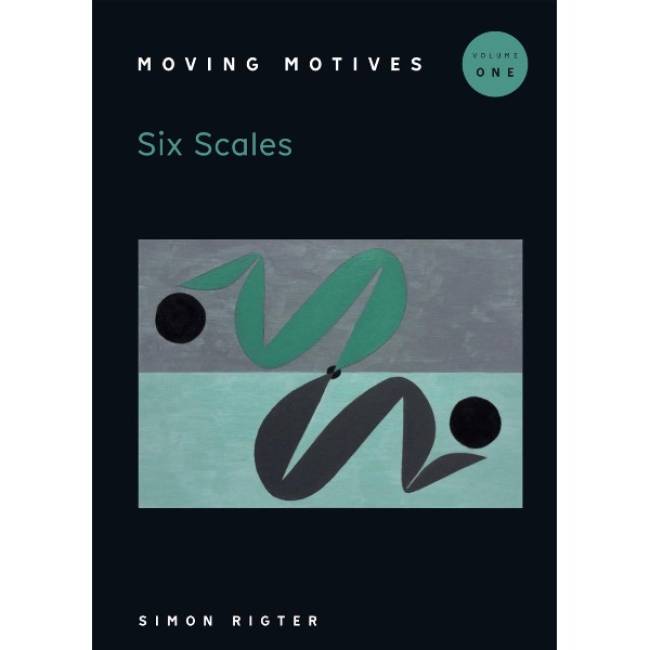Simon Rigter: Moving Motives vol. 1 Six Scales
The primary objectives of this method book include ear training, development of insight and understanding, flexibility in all keys, and achieving a feel for how different scales work together.
This is contains only volume 1: Six Scales (Click here for the set of volume 1 & 2)
Moving Motives:
During my first conservatory lesson, my teacher told me to learn the major and minor scales in thirds, triads and seventh chords in all twelve keys. He taught me that anything that goes up can come back down, anything in major can be played in minor, and that any motive can be moved through the degrees of a scale.
That was in September 1989, and I'm still practising variations of things I learnt in that lesson as I write this in May 2024.
Moving Motives is not about improvisation, but the exercises serve as preparatory material to that end, helping with the familiarisation of melodic and harmonic material found in tonal music. The exercises in Moving Motives create an understanding of concepts such as major & minor, moll-dur & dur-moll, lower leading-tones & upper diatonics, diatonic & chromatic passing tones, extensions & important seventh chords, secondary dominants & sub-dominants, and open & mixed positions.
While the exercises presented in Moving Motives will improve dexterity, the primary objectives include ear training, development of insight and understanding, flexibility in all keys, and achieving a feel for how different scales work together. Any technical improvements are merely a welcome byproduct.
Moving Motives Volume One - Six Scales:
When improvising over jazz standards, adopting a mindset focused on degrees rather than absolute chords proves extremely beneficial. Thinking in degrees provides insight into the relationship between chords and keys, indicating how a chord feels in relation to a key. Moving motives through the degrees of basic tonal scales not only enhances your ability to play by ear but also fortifies your intuition, allowing you to think fluently in the language of music itself.
My advice is to practise these exercises slowly and precisely, listen carefully, and choose a tempo that allows you to hear each note, or group of notes, before you play them. Additionally, singing and mentally practising them away from the instrument can be immensely helpful.
Most exercises are notated in C major and C minor. The idea is to practise them, or even better, your own variations, by heart and through all keys. Transposing is where analysis and ear training come together, and is at the essence of Moving Motives.
Although I'm a jazz musician, the exercises in this book are not particularly idiomatic. While some carry a jazz flavour, most have a classical resonance. The fundamental melodic and harmonic elements of classical and jazz music are remarkably similar. Moving Motives can help jazz musicians as well as classical musicians to create their own appropriate exercises for scales and arpeggios.
The possibilities are infinite.
Aanverwante producten
Contactgevevens:
- Harry Bakker v.o.f.
- Dorpsstraat 12
- 1399 GV Muiderberg
- the Netherlands
- +31 294 262049
- [email protected]
- WhatsApp only: 06-23620201
|
Openingstijden: |
|
| Maandag: | gesloten |
| Dinsdag: | 10.00 - 18.00 |
| Woensdag: | 10.00 - 18.00 |
| Donderdag: | 10.00 - 18.00 |
| Vrijdag: | 10.00 - 18.00 |
| Zaterdag: | 10.00 - 16.00 |












